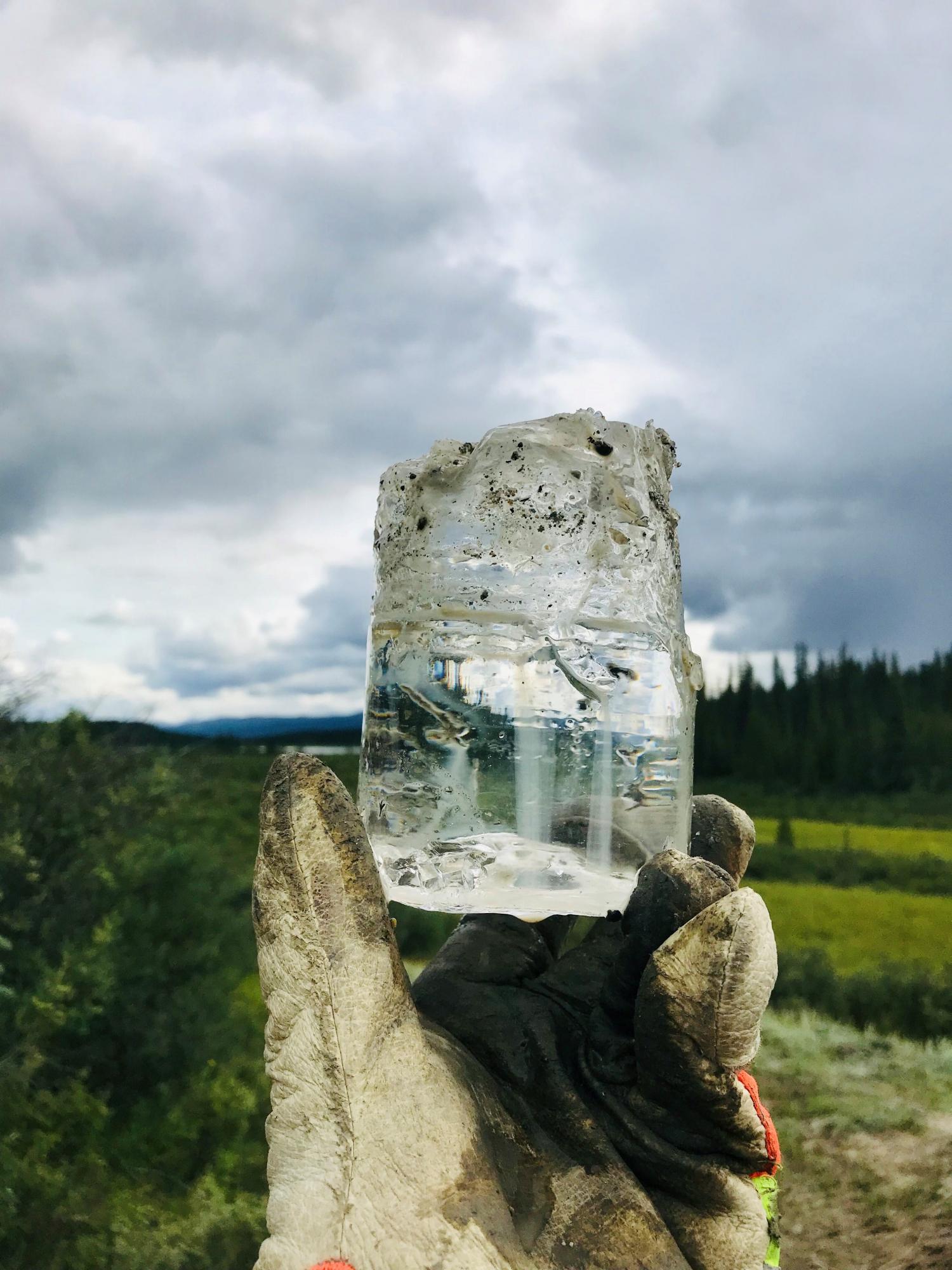This multi-year project aims to advance the understanding of permafrost occurrence, characteristics, and vulnerability to thaw, and the resulting impacts on key areas of concern regarding climate change and the changing landscape ie. changes to wildlife, vegetation, permafrost and water, all of which impact country foods, human health, and infrastructure.
 The Permafrost and Geoscience research group started by characterizing permafrost in the Kloo and Aishihik Lake watersheds to assess the potential vulnerability to thaw with climate change. This involved the selection of study sites, drilling of boreholes, extraction and laboratory analysis of permafrost cores and installation of thermistors to collect temperature data from the vertical permafrost profile.
The Permafrost and Geoscience research group started by characterizing permafrost in the Kloo and Aishihik Lake watersheds to assess the potential vulnerability to thaw with climate change. This involved the selection of study sites, drilling of boreholes, extraction and laboratory analysis of permafrost cores and installation of thermistors to collect temperature data from the vertical permafrost profile.
This project has been guided by input from community members and the priorities set by the Champagne and Aishihik First Nations (CAFN) government. Priorities such as water quality, lake health, fish and wildlife health, contaminants, permafrost thaw, and infrastructure were the most valued concerns of CAFN members. The Permafrost and Geoscience research group engages with the community in research-based activities such as site selection, field sampling training, education and regular reporting, as well as learn from the community about CAFN values supporting cross-cultural awareness in research.
In the last stages of the project, the data will be transformed into a final platform that is accessible to community members. The creation of maps, web maps, and storyboards will engage the community and communicate how the landscape has the potential to change as permafrost thaws.
- Project lead: Dr. Fabrice Calmels, Research Chair in Permafrost and Geoscience, YukonU Research Centre
- Permafrost Scientists:
- Louis Philippe Roy, Permafrost and Geoscience, YukonU Research Centre
- Fanny Amyot, Casey Buchanan, Philip Sedore, Permafrost and Geoscience, YukonU Research Centre
- GIS Specialist: Cyrielle Laurent; Permafrost and Geoscience, YukonU Research Centre
- Cathy Koot, Project Officer
- Champagne and Aishhik First Nations government: Ray Gunness, Kenny Joe, Zabrina Leslie
- Field/Lab Assistant(s): CAFN Natural Resources staff, Guardians Program and YukonU students
Recommended Citation:
Calmels, F., Laurent, C., Amyot, F., Roy, L.P., Buchanan, C.A., Koot, C., Sedore, P., 2025. Characterizing permafrost vulnerability to climate change induced thaw in the Traditional Territory of the Champagne and Aishihik First Nations. YukonU Research Centre, Yukon University, 160p